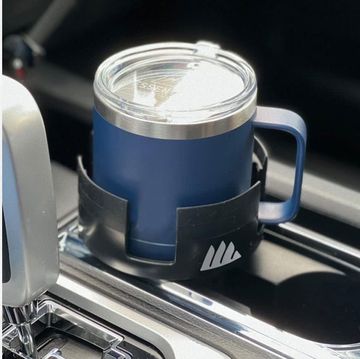Westlake Village, Calif.—Born from a desire to satiate appetites for a compact crossover, the Juke was conceived as a sportier alternative to the Nissan Rogue. The larger, family-friendly Rogue has exceeded sales expectations in the U.S. market, which begs the question: can the Juke carve a sizeable niche for itself stateside? To find out, we sampled one of the two pre-production examples in America well in advance of its October release.
The Specs
Everything about the Juke's outward appearance suggests a lively personality. From its massive haunches and complex sculptural shapes to its large rally-inspired headlamps, the Juke looks like the rambunctious, leggy lovechild of the 370Z and the new Leaf EV.
Its underpinnings may not be son-of-Godzilla aggressive, but they're more driver-oriented than you might expect. Under the hood is a powerplant making its U.S. debut: a turbocharged, direct-injected 1.6-liter inline four-cylinder. The all-aluminum engine produces over 180 hp and 170 ft-lbs of torque, and mates to either a continuously variable automatic transmission, or a six-speed manual (in front-wheel-drive SV or SL trim levels). The Juke can be driven in Normal, Sport or Eco modes, which control throttle response, steering effort and transmission responsiveness. Fuel economy is estimated at 30 mpg combined.
A differential diverts power to the front wheels, but all-wheel drive versions are equipped with a torque-vectoring feature, which splits torque up to 50:50 between the front and rear wheels, and up to 50 percent toward either of the rear wheels. This is the first application of this technology in the under C-segment, and at 64 pounds, Nissan claims their torque-vectoring hardware is the lightest in the world. The all-wheel-drive system apportions torque based on vehicle speed, wheel speed, gear position, lateral G forces and yaw rate.
A multilink rear suspension setup is found in all-wheel-drive Jukes, replacing the torsion beam arrangement found in the front-wheel-drive version. Speed-sensitive electric steering is included on every trim level, as are 17-inch alloy wheels, antilock brakes with electronic brake-force distribution, and brake assist. Dual-stage rear passenger, side curtain and front-, side-, and roof-mounted airbags are standard, as are stability and traction control systems.
Three trim levels will be available—S, SL and SV—though most of their differences will be apparent inside rather than outside the cabin. Available options include USB audio connectors, a six-speaker stereo system, GPS navigation, Bluetooth compatibility, a rear-view camera, Nissan's wireless key system with push-button start and leather seats. Curb weights range from 2923 pounds for a six-speed manual-equipped, front-wheel-drive SV model to 3221 pounds for an all-wheel-drive SL version.
The Juke pricing will start just under $20,000 when it hits U.S. showrooms in October. Though package prices have yet to be determined, Nissan product planners are confident that fully optioned versions will come in well below $30,000.
>
The Drive
Though plenty of hard plastic surfaces line the Juke's cabin, a few colorful details enliven what could have been an otherwise ordinary space. Most striking is a glossy red center console that bears more than a passing resemblance to a motorcycle tank; the detail was present on the Juke prototype we saw at the New York International Auto Show, and we're happy to see it survived to production. Coordinated accents add a dash of color to the door panel, as do fin-like upholstered sections that echo the red stitching on the leather-lined seats of our test car.
The five-passenger Juke's interior proportions are less spacious than those found in the more utilitarian Versa, due to the Juke's downward-sloping roofline and all-wheel-drive architecture. Though relatively wide, the Juke's compact footprint translates to an intimate cockpit. When the 60/40 folding rear seats are upright there's 10.5 cubic feet of rear storage; there's 35.9 cubic feet when they're folded down. But the Juke is marketed towards what Nissan identifies as aggressive attention seekers, and we're guessing that demographic is more motivated by the experience from the driver's seat than by volumetric capacity.
Warned that our test vehicles were pre-production mules that don't have the same level of fit, finish and tune of final production cars, we set out on a driving route that covered challenging roads traversing the canyons that slice through the Malibu hills. Our CVT-equipped test car could be shifted automatically, or in a manual mode that simulates a six-speed transmission. Although the Juke is positioned as a sporty compact crossover, paddle shifters are curiously absent; manually actuated gear changes can only be triggered by clicking the shift lever up or down. But no bother: The turbocharged engine starts hitting its stride at the fat portion of its torque curve—around 3000 rpm—and pulls strongly enough to entertain extralegal speeds, should the driver so desire. We reckon 60 mph can be achieved in less than 8 seconds, and noted that that velocity translates to a leisurely engine speed of 2000 rpm.
Performance-wise, the Juke's strong suit is handling—at least on the all-wheel-drive version we drove. Throw this compact SUV into a turn, and its ton-and-a-half of mass changes direction surprisingly effortlessly. Nissan's torque-vectoring system is impressive, and inspires the confidence to achieve entry speeds normally reserved for cars with considerably lower centers of gravity. Ride quality is a bit busy, which shouldn't be surprising considering the relatively short 99.6-inch wheelbase.
The driver can select three different drive modes using the so-called Integrated Control (I-CON) system. The setup utilizes a small screen flanked by six buttons and two large knobs, and a colored LED filtering system handily switches button labels and colors between the I-CON options and air-conditioning controls. In Sport mode, a circular five-segment display conveys turbo boost levels, while Normal mode translates torque. A two-axis G-force display can also be summoned, though the whole arrangement is oversimplified enough to feel a bit gimmicky, especially in contrast to the remarkably detailed multifunction display on the flagship GT-R. Though Normal and Sport modes offer only mildly different steering and throttle-response feels, Eco feels dramatically more sluggish; at least hypermilers can appreciate that mode's function, which rates driving habits based on throttle input, and can recall a history of fuel economy with a bar chart.
The Bottom Line
Nissan executives admit that the Juke is a bit of an experiment for the U.S. market, adding that they have high expectations for European sales, where they reckon it may move 75,000 to 100,000 units annually.
Had it been envisioned primarily as a U.S.-spec car, the Juke's involving dynamics, edgy styling and compact proportions might have been toned down. But given the burgeoning anticipation for enthusiast-oriented cars like the European Ford Focus, the Juke's combination of sensible sizing and entertaining dynamics makes it a winner on any continent.













